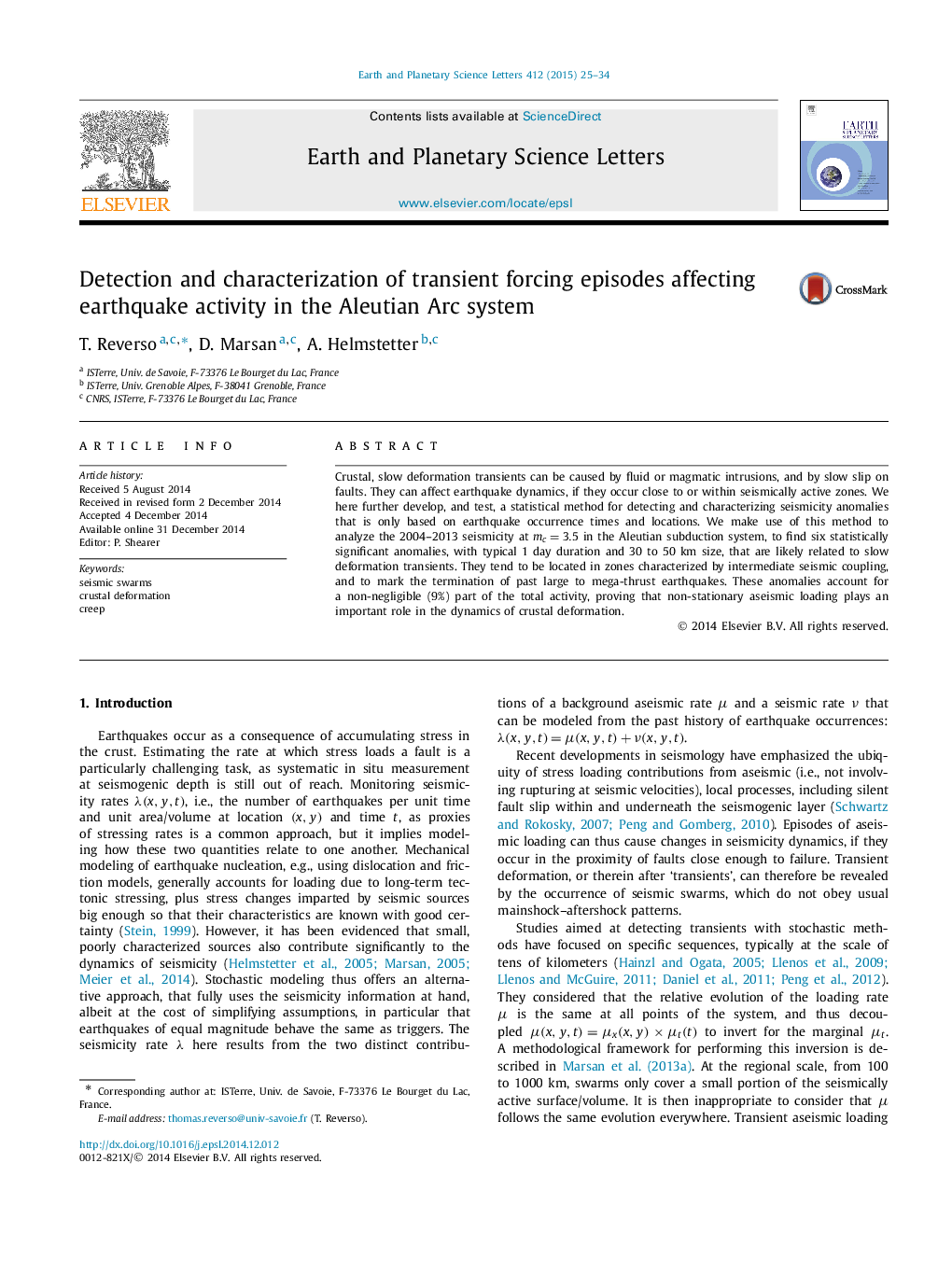| Article ID | Journal | Published Year | Pages | File Type |
|---|---|---|---|---|
| 6428627 | Earth and Planetary Science Letters | 2015 | 10 Pages |
â¢We propose a new approach to detect transient deformation, using seismicity.â¢This method is based on space-time ETAS model.â¢We test our method on synthetic catalogs and we use it on Aleutian arc.â¢We find six transients that are not related to aftershock sequences in Aleutian arc between 2004 and 2013.
Crustal, slow deformation transients can be caused by fluid or magmatic intrusions, and by slow slip on faults. They can affect earthquake dynamics, if they occur close to or within seismically active zones. We here further develop, and test, a statistical method for detecting and characterizing seismicity anomalies that is only based on earthquake occurrence times and locations. We make use of this method to analyze the 2004-2013 seismicity at mc=3.5 in the Aleutian subduction system, to find six statistically significant anomalies, with typical 1 day duration and 30 to 50 km size, that are likely related to slow deformation transients. They tend to be located in zones characterized by intermediate seismic coupling, and to mark the termination of past large to mega-thrust earthquakes. These anomalies account for a non-negligible (9%) part of the total activity, proving that non-stationary aseismic loading plays an important role in the dynamics of crustal deformation.
